Birds are truly remarkable creatures, and one of their most striking features is their beak. Beaks come in countless shapes and sizes, each perfectly adapted to the bird's feeding habits and lifestyle. Some beaks look almost alien in design, performing tasks that seem impossible. From long, needle-like beaks to broad, spoon-shaped ones, birds have evolved beaks that suit their every need, from catching fish to feeding on fruits or even probing deep into the mud for food. In this article, we’ll explore 15 birds with unbelievable beaks, dive into their fascinating behavior, and look at how these unique beaks help them thrive in their environments.
Introduction to Bird Beaks
Why Bird Beaks Are So Unbelievable
15 Birds With Unbelievable Beaks
3.1. Black Skimmer
3.2. Rhinoceros Hornbill
3.3. Roseate Spoonbill
3.4. Red Crossbill
3.5. Shoebill
3.6. Long-Billed Curlew
3.7. Sword-Billed Hummingbird
3.8. Great Hornbill
3.9. Toco Toucan
3.10. Keel-Billed Toucan
3.11. American White Pelican
3.12. Flamingo
3.13. Kiwi
3.14. Atlantic Puffin
3.15. American Avocet
Adaptations of Bird Beaks
How Bird Beaks Help with Feeding Habits
Beak Evolution and How It Contributes to Survival
The Impact of Habitat Loss on Birds With Unique Beaks
Why We Must Protect These Birds
Conclusion
Birds, unlike mammals, don’t have teeth, but their beaks more than make up for it. The shape, size, and strength of a bird’s beak are designed for specific functions. Whether it's cracking open seeds, spearing fish, or sipping nectar, a bird’s beak is a powerful tool. But the diversity of beaks in the avian world goes beyond simple food acquisition—it’s a window into the evolution of these creatures. Some beaks are built for precision, while others are built for power. In this article, we’ll look at the most remarkable examples of bird beaks that seem almost too strange to be true.
Bird beaks are the result of millions of years of evolution. Every bird species has adapted its beak to best suit its environment and diet. These beaks are not just tools for eating—they are instruments for survival. Some beaks have evolved to perform highly specialized functions, while others are shaped to help birds in their mating rituals or in defending their territory. In this section, we will explore how and why these beaks are so different, and how they enable birds to thrive in diverse ecosystems.
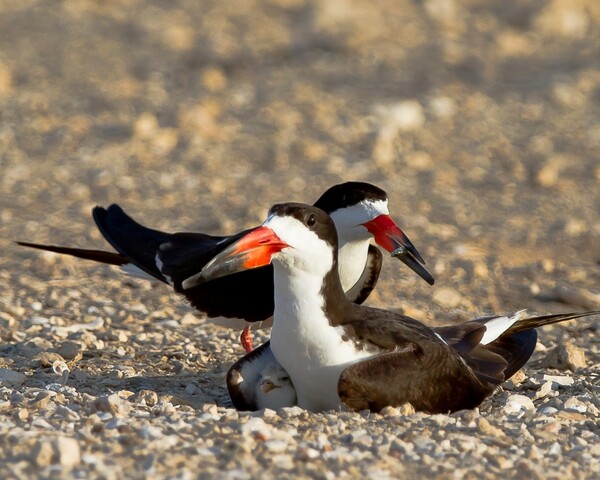
The Black Skimmer's beak is one of the most unique in the bird world. Its lower mandible is significantly longer than the upper mandible, creating a “skimming” effect as it flies just above the water’s surface, catching small fish with incredible precision. This specialized beak is built for speed and efficiency, allowing it to feed while flying. Its feeding technique is so precise that it can snatch fish at high speed without touching the water.
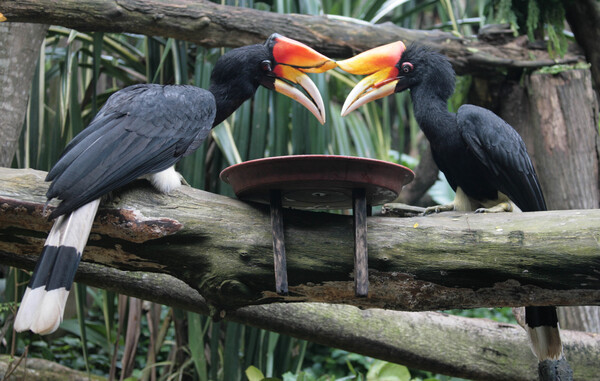
The Rhinoceros Hornbill’s large, curved beak is topped with a striking horn-like structure called a casque. This casque serves multiple functions, including amplifying the bird's calls and helping it attract mates. The beak itself is incredibly strong, allowing the hornbill to feed on hard fruits, seeds, and even small animals. This bird's remarkable beak is one of the largest in the hornbill family, and it plays a vital role in its survival in Southeast Asia's dense rainforests.
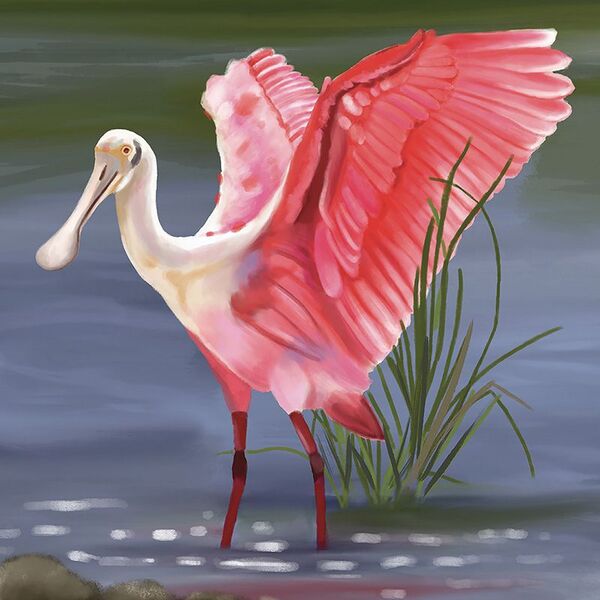
The Roseate Spoonbill has a beak shaped like a spoon, which it uses to sift through the shallow waters of wetlands. This beak is perfectly adapted for foraging, allowing the spoonbill to search for small fish, crustaceans, and insects while wading through mud and water. The spoon-shaped structure helps it detect prey without fully submerging its head, making it an efficient forager in its wetland habitat.
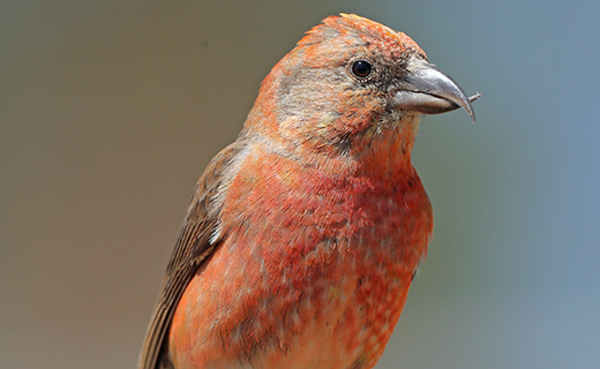
The Red Crossbill has one of the most unusual beaks in the bird world—its mandibles cross over one another like a pair of scissors. This peculiar beak shape is specifically designed to open pine cones and extract seeds, which make up the majority of its diet. Its beak is powerful enough to crack tough pine cones open, giving it access to a food source that many other birds can't reach.
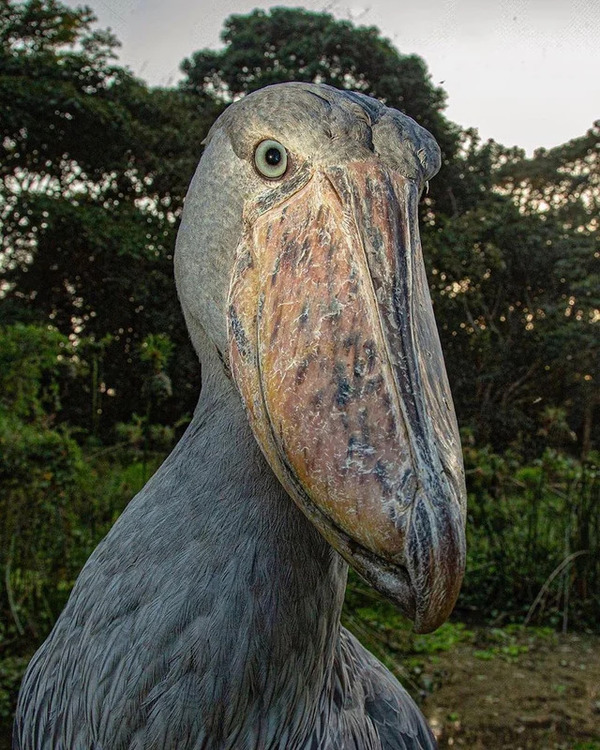
The Shoebill's enormous, shoe-shaped beak is not just for show. This bird uses its powerful beak to catch large prey, including fish, amphibians, and even small reptiles like baby crocodiles. The Shoebill is an expert hunter, using its beak to strike with tremendous force and precision. The large size of its beak also makes it intimidating to potential predators.
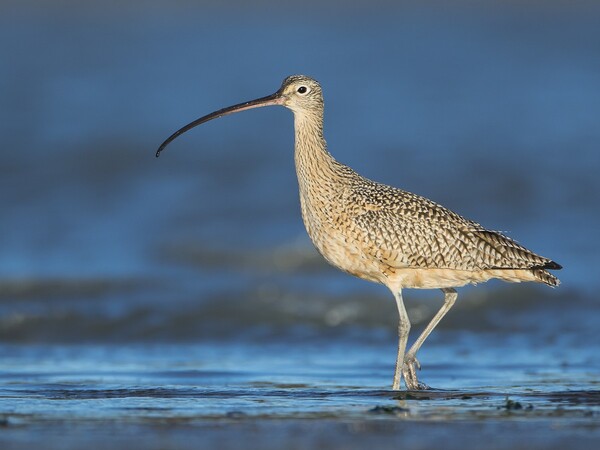
With one of the longest beaks in relation to its body size, the Long-Billed Curlew uses its long, curved bill to probe deep into the mud and sand for invertebrates like worms and crabs. This long beak allows the curlew to access food sources that other shorebirds can’t reach, giving it a distinct advantage in its coastal habitats.
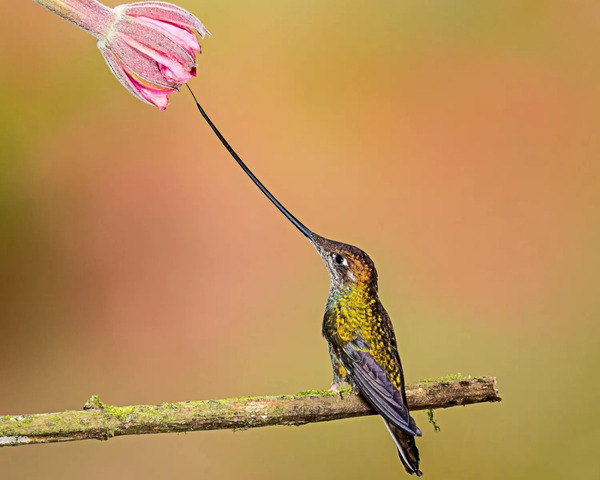
The Sword-Billed Hummingbird’s beak is longer than its entire body! This exceptional beak allows the bird to feed on flowers with long, tubular shapes that would be inaccessible to other hummingbirds. The bird’s beak acts like a straw, drawing nectar from flowers while hovering in place. Its extraordinary beak is a key adaptation for feeding on some of the most elusive nectar sources.
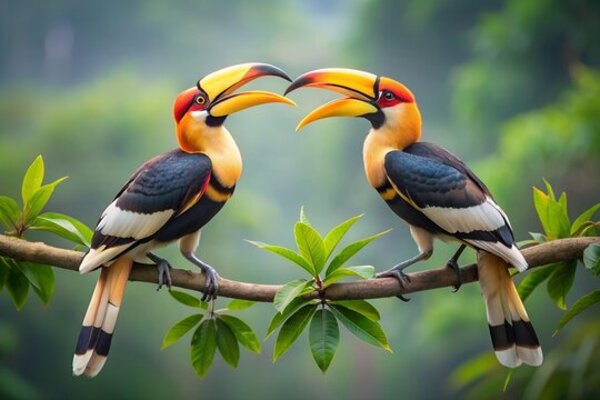
The Great Hornbill's beak is large and powerful, equipped with a casque on top of the bill that helps amplify its calls. This bird uses its massive beak to catch fruits, which are a major part of its diet, as well as small animals and insects. The casque also plays an important role in courtship, as it’s a visual signal of the bird’s health and strength.
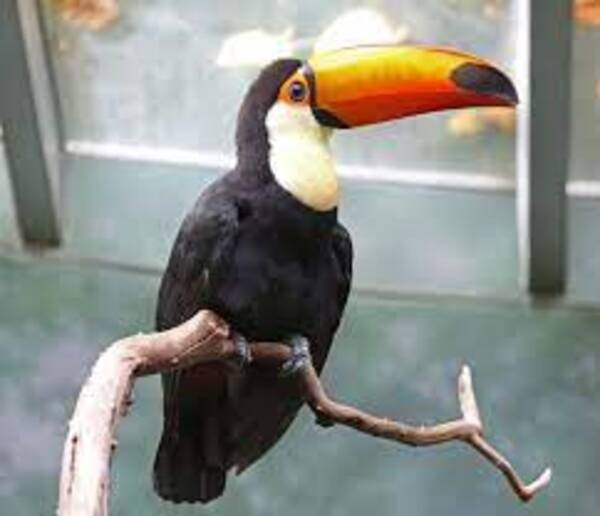
The Toco Toucan is famous for its large, vibrant, orange beak, which can grow as long as one-third of its body length. Despite its size, the toucan’s beak is very lightweight, thanks to its hollow structure. This allows the bird to easily manipulate its beak to reach fruit high up in trees. The bright coloration of the beak is also used to attract mates during the breeding season.
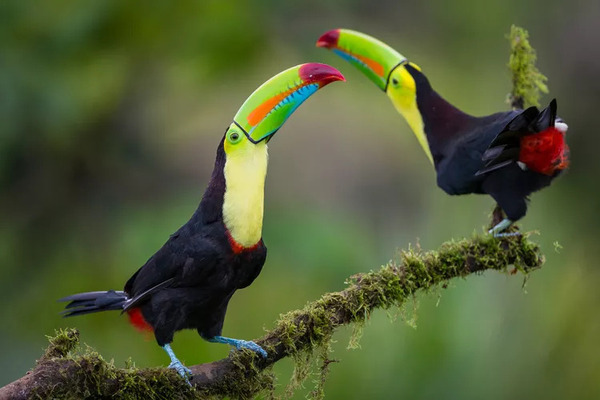
Known for its rainbow-colored beak, the Keel-Billed Toucan’s bill is just as impressive as its vibrant plumage. Like the Toco Toucan, it uses its beak to pluck fruit from trees, but its specialized bill also helps it defend its territory by being a visual deterrent to potential rivals. The structure of the beak helps the bird maintain balance while navigating the treetops.

The American White Pelican has an extraordinary beak with a large, expandable pouch. This pouch is used to scoop up fish and water during feeding. The pelican’s unique feeding method involves plunging its beak into the water and then straining out the liquid, trapping fish inside the pouch. This technique allows the pelican to catch large quantities of fish at once.
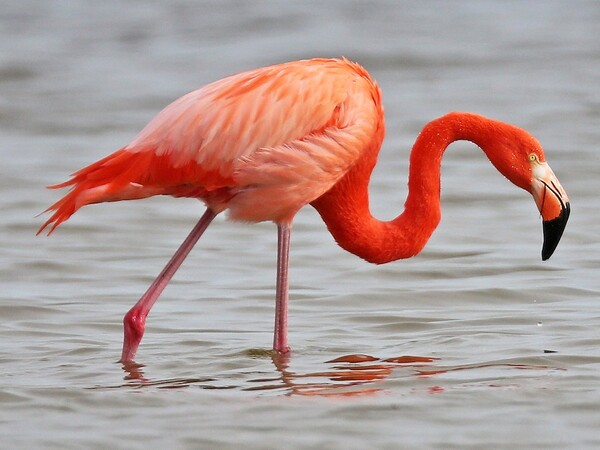
Flamingos have a downward-curved beak designed for filter feeding. They use this specialized beak to filter out small organisms from the water, such as algae, crustaceans, and brine flies. The shape of the beak is ideal for sifting through the mud, and its unique feeding method helps the flamingo thrive in wetlands and shallow lakes.
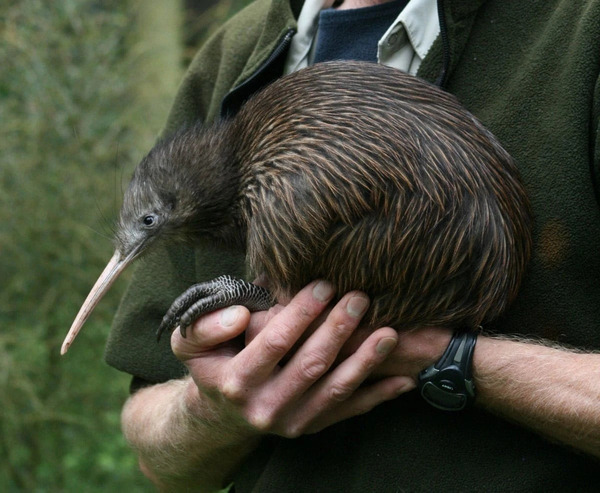
The Kiwi, New Zealand’s iconic flightless bird, has a long, slender beak with sensitive nostrils at the tip. This beak is used for probing the soil in search of invertebrates like worms and insects. Unlike other birds, kiwis rely heavily on their sense of smell to find food, which is made possible by their specialized beak.

The Atlantic Puffin has a brightly colored, triangular-shaped beak, which it uses to catch and store fish. Puffins are known to be able to hold several fish at once, thanks to the special structure of their tongue and jaw. The beak’s vibrant colors are also used for mate attraction and are a key part of their courtship rituals.
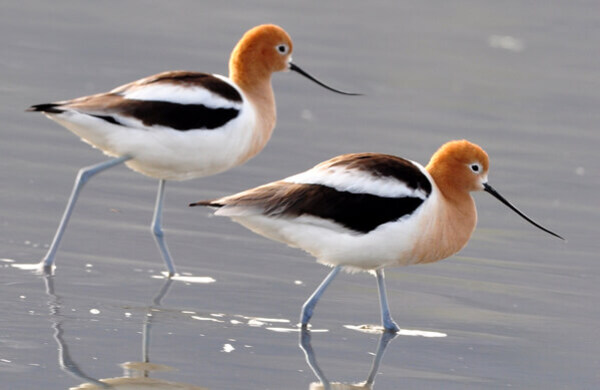
The American Avocet’s long, upward-curving beak is ideal for sweeping through the shallow waters of wetlands in search of small aquatic creatures like insects, crustaceans, and mollusks. The avocet’s beak allows it to efficiently forage in a wide range of aquatic habitats, from lakes to coastal marshes.
Beak shapes and sizes are adaptations that reflect a bird’s feeding behavior. For instance, raptors like hawks and eagles have sharp, hooked beaks to tear apart meat, while finches have short, stout beaks to crack seeds. These adaptations have allowed birds to exploit different ecological niches, making them highly specialized and efficient in their respective habitats.
Birds have evolved beaks that are uniquely suited to their diets. For example:
Filter feeders, like the Flamingo and American White Pelican, have beaks designed to sift through water.
Carnivorous birds, like the Shoebill, have strong, hooked beaks to catch and eat larger prey.
Nectar feeders, like the Sword-Billed Hummingbird, have long, slender beaks to reach deep flowers.
This specialization allows birds to thrive in specific ecosystems and maintain healthy populations.
Birds’ beaks are a direct result of evolutionary pressures. Their beaks have evolved to make feeding more efficient, improve mating success, and allow them to survive in diverse environments. For example, a bird with a long, thin beak can access nectar in flowers other birds can’t, while a bird with a powerful beak can crack tough seeds or prey on other animals. These evolutionary changes help ensure the survival of species and maintain biodiversity.
Many of the birds with these unbelievable beaks face threats from habitat loss, climate change, and human activity. For example, the Shoebill is endangered due to the draining of wetlands, while the Long-Billed Curlew is affected by agricultural expansion. Protecting habitats is essential for ensuring the survival of these unique birds and the ecosystems they inhabit.
Birds with incredible beaks play crucial roles in their ecosystems, from pollination to seed dispersal. They help control pest populations and contribute to the health of various habitats. By protecting these birds, we protect not only their species but also the many other creatures that rely on the same environment.
The diversity of bird beaks is a testament to nature's ingenuity. From the Black Skimmer's unique fishing technique to the Keel-Billed Toucan's vibrant beak, these birds have evolved to thrive in their environments. Protecting these birds is vital for maintaining biodiversity and ensuring that the natural world continues to fascinate and inspire future generations.
This comprehensive guide explores the remarkable world of birds with unbelievable beaks, detailing their special adaptations, feeding habits, and why they’re so crucial to our planet’s ecosystems. It also emphasizes the importance of conservation efforts to protect these extraordinary creatures.
animal tags: Shoebill
We created this article in conjunction with AI technology, then made sure it was fact-checked and edited by a Animals Top editor.